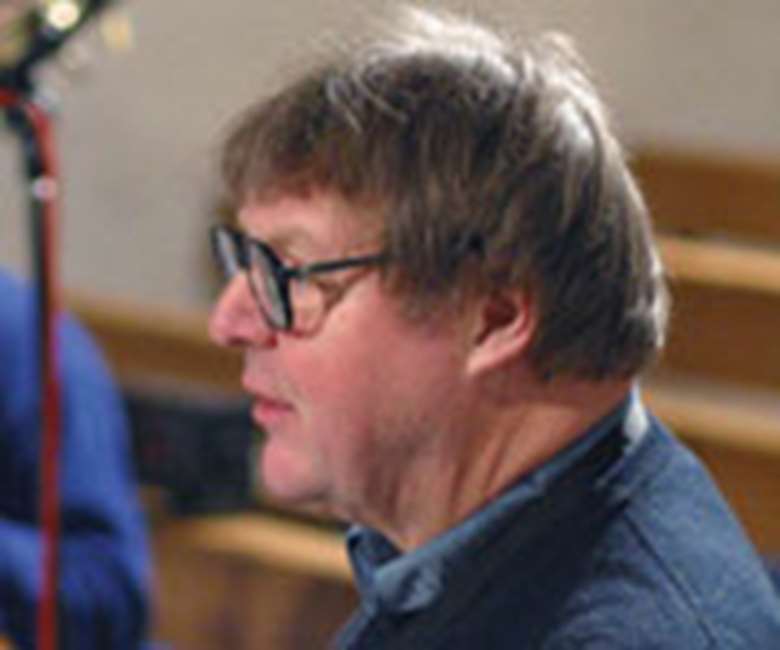John Surman - Spaces and Places
Tuesday, April 17, 2007
John Surman is one of the totemic figures of British jazz, one of the select number revered and admired in Britain and abroad, both for his technical skills and for his audacious approach to jazz and improvised music. His latest album The Spaces In Between is just one of a raft of new projects that Surman is involved with in the coming year, showing a wide range of Surman’s interests. Interview: Duncan Heining

Throughout his 40-year career, saxophonist John Surman has pioneered innovation in Jazz. His desire to create new spaces where improvisation can happen has been a driving force in his work and has kept him at the forefront of the music. He has developed the use of electronics in solo and group performance and used it to create a wholly unique compositional and improvisational style. And he’s worked with everything from brass ensembles and choirs to string quartets and full orchestras.
A few years ago, John moved permanently to live in Norway with long-term partner, singer Karin Krog. The immediate reason for this interview is his forthcoming CD, The Spaces In Between. However, with so many other projects coming together over the next twelve months, 2007 will offer an embarrassment of riches for John’s many fans. The new CD features John with bassist Chris Laurence and the Trans4mation string quartet and is a follow-up to Coruscating. Good though that album was, The Spaces In Between is a totally successful integration of written and improvised music and of Jazz, Folk and Classical styles. Indeed, it’s one of the finest albums John has ever made. I ask John how this project has changed since its beginnings seven years back.
“I think it’s developed. We did a number of performances after we recorded Coruscating, and we had done a few before it. I think a lot of the music has grown out of working together. I’ve realised what the strings can do and they’ve got used to the way that I’m looking at writing. So, the two things have gone hand-in-hand really.” John had tried writing for strings before but felt it lacked that special thing to “make the music come alive.”
“You could say it needed a bass but actually it needed the ‘one and only’ Chris Laurence to do it. He’s got that incredible link between working with orchestral string players and being a perfect improviser and someone whose playing I know very well.” John is spot on. Chris Laurence is the bridge both between those two worlds and between John’s reed instruments and the strings. But it’s also, the opportunity to work consistently with a core group that has transformed the music. Apparently, some promoters have wanted to take shortcuts and make savings by backing John and Chris with a local string quartet. As John explains, they are missing the point.
“These musicians are really important to this project. There’s a touch more to making this really work and that’s the way in which Trans4mation, who were also fans of Chris’ and my music anyway, take care of themselves while Chris and I go off on flights of fancy. We don’t have to nurse them to make sure they come in at the right place. Now, they know instinctively when to play the written parts and how, in a way, we will use them as a rhythm section. A normal ‘romantic’ string quartet will bend the time, so when we go off on a flight of fancy, we don’t always end up in the same place together.”
If composition has become an increasingly important aspect of John’s work, it is as a means rather than as an end in itself. For John: “The writing just creates these different places and textures and ways of setting off improvisation.” That in turn makes it essential that projects like Coruscating or Proverbs and Songs, with its organ and choir, are allowed to grow almost organically. In John’s opinion, the constant demand for new work stops that process of natural growth.
“I’m afraid there is this quest for novelty and new projects, whereas I think a lot of pieces, like Proverbs and Songs benefit from being performed. The more we’ve played it, the looser it’s got, the more it’s revealed, the more freedom. But people say, why don’t you write something else? But for me, it’s a case of ‘Wait a minute!’ This isn’t a set piece of music that will be performed the same way every time. It’s a piece that’s living and if you don’t keep playing it, it won’t go anywhere.”
The title track of the new CD not only illustrates this beautifully but reveals the part that improvisation plays in John’s life as well as in his music. “If only I could live my life in such a structured way that I knew where things were leading and what their purpose was. But I really don’t. You’ve got this quite long solo piece that Rita Manning plays in the middle of The Spaces In Between simply because it emerged as we were playing together. I thought it would be really nice, if I could play the violin. I thought, what would I play if I could do a violin solo? So, I wrote something to see what would happen. So, it’s really what I would play but I’ve written it out for Rita who plays it magnificently.”
This feature is taken from Jazzwise Issue Number 108 - to read the full feature subscribe here and receive a free CD.